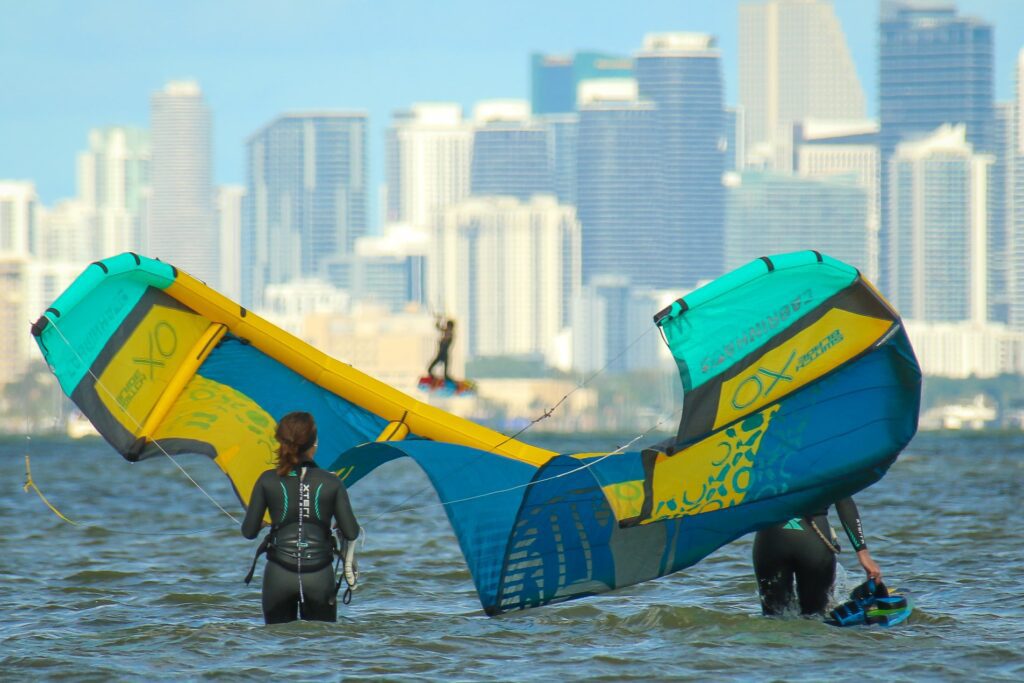
Step-by-step Guide to Becoming an IKO Kitesurfing Instructor Certificate.
Outline.
- Introduction to kitesurfing.
- Importance of kitesurfing instructor certification.
- Step 1: Develop kitesurfing skills.
- Step 2: Research IKO certification requirements.
- Step 3: Enroll in an IKO-certified school.
- Step 4: Complete IKO training programs.
- Step 5: Pass IKO instructor exams.
- Step 6: Gain practical teaching experience.
- Step 7: Apply for IKO instructor certification.
- Step 8: Maintain IKO instructor certification.
- Benefits of Becoming an IKO certified kitesurfing instructor.
- Conclusion.
- FAQs.
Article.
Step-by-step Guide to Becoming an IKO Kitesurfing Instructor.
Are you passionate about kitesurfing and want to share your love for the sport with others? Becoming a certified kitesurfing instructor can be a fulfilling and rewarding career choice. This article will provide a step-by-step guide to becoming an IKO (International Kiteboarding Organization) certified kitesurfing instructor.
Introduction to Kitesurfing.
Kitesurfing, also known as kiteboarding, is an exciting water sport that combines elements of surfing, wakeboarding, and kite flying. It involves riding on a board while being pulled by a kite controlled by a bar connected to the rider via lines. Kitesurfing offers an adrenaline-pumping experience, allowing riders to perform tricks, jumps, and maneuvers on the water.
Importance of Kitesurfing Instructor Certification.
As with any water sport, safety is paramount in kitesurfing. A certified instructor is trained to teach proper techniques, safety measures, and best practices to beginners and intermediate riders. Kitesurfing instructor certification not only ensures that you have the necessary skills and knowledge to teach others but also provides credibility and recognition in the industry. IKO, one of the leading organizations in the kitesurfing world, offers comprehensive certification programs for aspiring instructors.
Step 1: Develop Kitesurfing Skills.
Before embarking on the journey to become an IKO-certified kitesurfing instructor, it is crucial to develop your kitesurfing skills. You must be proficient in riding, jumping, turning, and other advanced maneuvers. Spend ample time practicing and honing your skills to become a competent rider. Familiarize yourself with different kite sizes, types, and safety equipment—gain experience in various weather conditions and locations to broaden your understanding of the sport.
Step 2: Research IKO Certification Requirements.
Once you have mastered kitesurfing skills, the next step is to research the certification requirements of the International Kiteboarding Organization (IKO). Visit their official website or contact them directly to gather information about their certification programs’ prerequisites, fees, and other details. IKO offers different levels of certification, including Assistant Instructor, Instructor Level 1, and Instructor Level 2, each with its own set of requirements.
Step 3: Enroll in an IKO Certified School.
To become an IKO-certified kitesurfing instructor, you must enroll in an IKO-certified school. These schools follow IKO’s standardized teaching methods and safety guidelines to ensure quality training. Search for an IKO-certified school in your area or a desirable location and enroll in their instructor training program. Check the school’s credentials, reputation, and student reviews to ensure its credibility.
Step 4: Complete IKO Training Programs.
IKO offers comprehensive training programs that cover theoretical knowledge, practical teaching skills, and safety protocols. The training programs are designed to equip you with the necessary expertise and knowledge to become a successful kitesurfing instructor. Attend all the required courses, workshops, and seminars the IKO-certified school offers. Learn about teaching techniques, risk assessment, rescue procedures, and other essential topics. Please take advantage of the opportunity to learn from experienced instructors and gain insights from their expertise.
Step 5: Pass IKO Instructor Exams.
After completing the training programs, you must pass the IKO instructor exams to demonstrate your proficiency in teaching and safety standards. The exams may include written tests, practical assessments, and evaluations of your teaching skills. Review the training materials, practice teaching techniques, and understand the IKO standards and guidelines. Passing the exams will qualify you for IKO instructor certification.
Step 6: Gain Practical Teaching Experience.
Once you have obtained your IKO instructor certification, gaining practical teaching experience is crucial to becoming a successful kitesurfing instructor. Seek opportunities to teach at IKO-certified schools, gain experience in different locations, and work with students of varying skill levels. Adapt your teaching style to other learners and provide constructive feedback to help them progress. Practical teaching experience will further enhance your skills, confidence, and reputation as an instructor.
Step 7: Submit Application for IKO Instructor Certification.
After gaining sufficient teaching experience, you can submit your application for IKO instructor certification. Follow the application process outlined by IKO, which may include submitting documentation of your qualifications, experience, and recommendations from other instructors or schools. Pay the required fees and offer all the necessary documents accurately and promptly. Upon successful review of your application, you will receive your official IKO instructor certification.
Step 8: Maintain IKO Instructor Certification.
Becoming an IKO-certified kitesurfing instructor is not the end of the journey. Maintaining your certification by keeping up with IKO’s standards, guidelines, and requirements is essential. Attend regular updates, workshops, and seminars offered by IKO to stay updated with the latest teaching techniques, safety protocols, and industry trends. Continuously improve your skills, knowledge, and teaching abilities to provide the best possible experience for your students.

Benefits of Becoming an IKO Certified Kitesurfing Instructor.
Becoming an IKO-certified kitesurfing instructor offers numerous benefits. Firstly, it provides credibility and recognition in the kitesurfing community, as IKO is a renowned organization with a global presence. IKO certification demonstrates your competence in teaching kitesurfing and assures students of your professionalism and adherence to safety standards. Additionally, as a certified instructor, you may have access to exclusive job opportunities at IKO-certified schools or resorts worldwide. You can also set up your kitesurfing school or offer private lessons, allowing you to pursue a rewarding career on your terms.
Conclusion.
Becoming an IKO-certified kitesurfing instructor requires dedication, hard work, and a passion for the sport. Following the step-by-step guide outlined above, you can embark on a fulfilling journey to become a professional kitesurfing instructor. Remember to continuously improve your skills, stay updated with industry standards, and prioritize safety in your teaching. With the right qualifications, experience, and commitment, you can thrive as an IKO-certified kitesurfing instructor and share your love for the sport with others.
FAQs.
- Can I become a kitesurfing instructor without certification?
While it is possible to teach kitesurfing without certification, it is highly recommended to become certified to ensure proper training, safety measures, and credibility in the industry. IKO certification provides standardized teaching methods, safety guidelines, and recognition.
How long does it take to become an IKO-certified kite surfing instructor?
The duration of becoming an IKO-certified kitesurfing instructor may vary depending on your prior experience, dedication, and availability. Typically, it can take several months to a year or more to complete the necessary training programs, gain practical teaching experience, and pass the exams.
- Can I become an IKO-certified kitesurfing instructor if I am not an expert kitesurfer?
To become an IKO-certified kitesurfing instructor, you need to have a high level of proficiency in kitesurfing. While you may not need to be an expert, you should have solid skills and experience in kitesurfing, including riding, jumping, and handling different conditions. IKO certification ensures you have the skills and knowledge to teach others safely and effectively.
- How much does it cost to become an IKO-certified kitesurfing instructor?
The cost of becoming an IKO-certified kitesurfing instructor may vary depending on the location, training programs, and additional expenses such as travel and accommodation. It is essential to research and budget for the costs associated with the training programs, exams, and certification fees. However, the investment in becoming a certified instructor can lead to rewarding career opportunities and increased earning potential.
- Is IKO the only organization that offers kitesurfing instructor certification?
While IKO is one of the most recognized and reputable organizations for kitesurfing instructor certification, other organizations offer similar certificates. However, choosing a recognized and respected organization that follows standardized teaching methods, safety guidelines, and industry standards is essential.
- In conclusion, becoming an IKO-certified kitesurfing instructor requires dedication, commitment, and a passion for the sport. Following the step-by-step guide, gaining the necessary qualifications and experience, and maintaining certification can open up exciting career opportunities in the kitesurfing industry. Remember to prioritize safety, continuously improve your skills, and share your love for kitesurfing with enthusiasm and professionalism. So, take the first step towards becoming an IKO-certified kitesurfing instructor and embark on a thrilling and fulfilling journey in kitesurfing!
Author
Latest entries
 WatersportsMay 19, 2024Cabrinha 2024 Moto XL Review: The Ultimate Lightwind Kite
WatersportsMay 19, 2024Cabrinha 2024 Moto XL Review: The Ultimate Lightwind Kite WatersportsDecember 16, 2023Kiteboarding Travel
WatersportsDecember 16, 2023Kiteboarding Travel WatersportsDecember 14, 2023RED BULL KING OF THE AIR 2023
WatersportsDecember 14, 2023RED BULL KING OF THE AIR 2023 WatersportsNovember 11, 2023GKA Freestyle-Kite World Cup France 2023: A Thrilling Journey through Wind and Waves
WatersportsNovember 11, 2023GKA Freestyle-Kite World Cup France 2023: A Thrilling Journey through Wind and Waves
